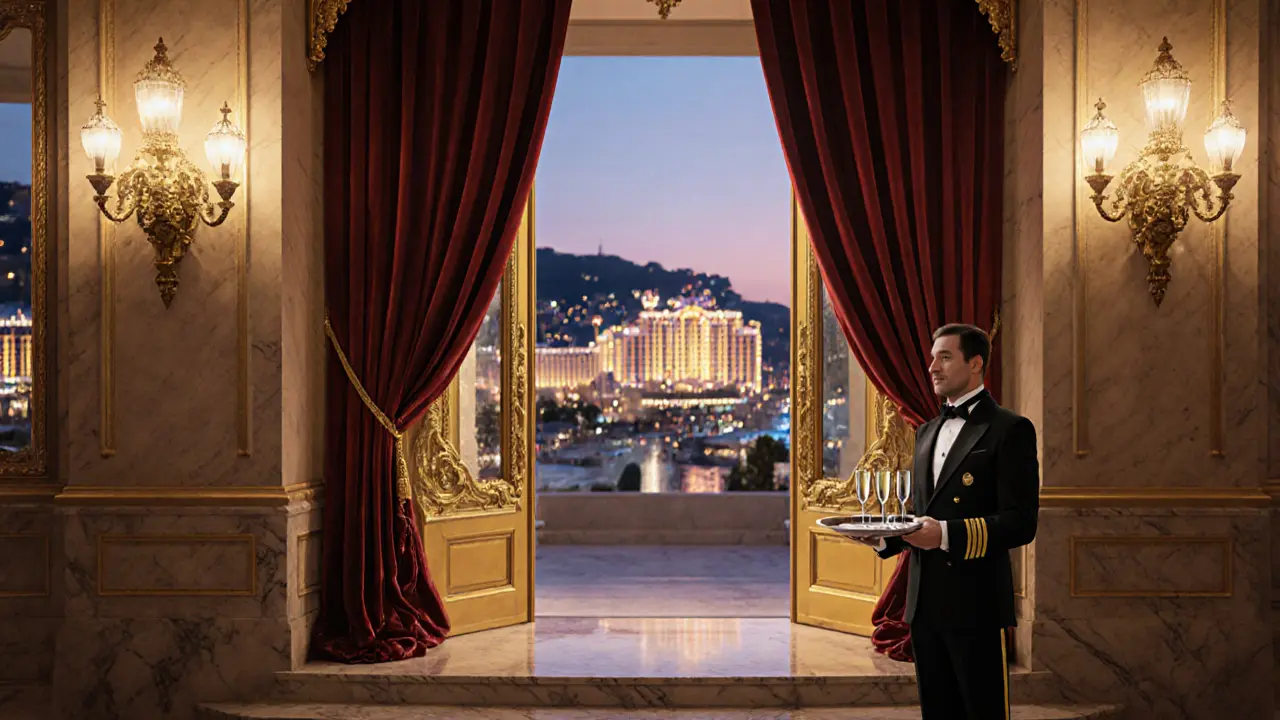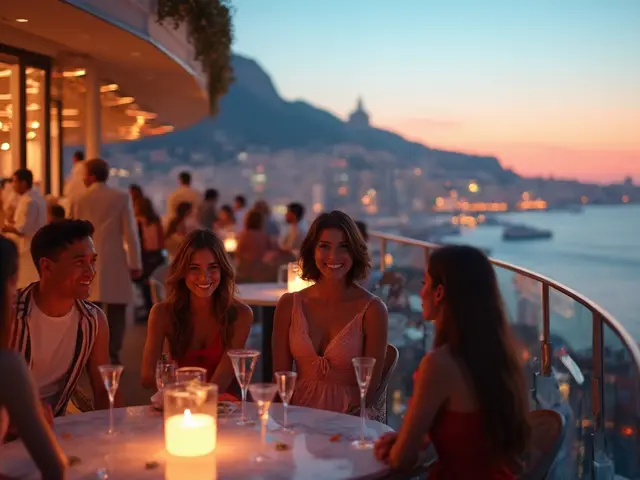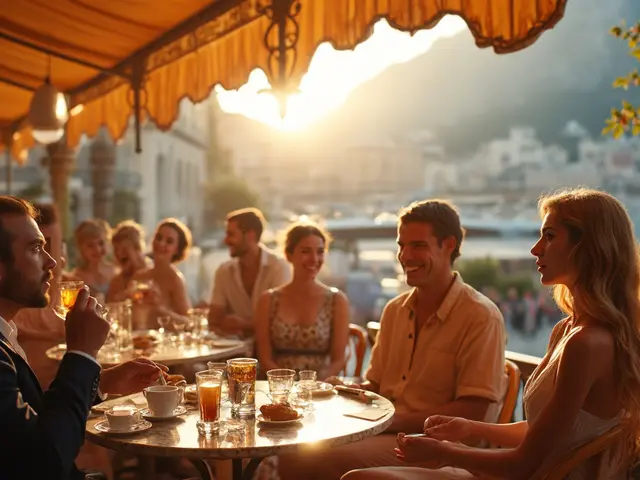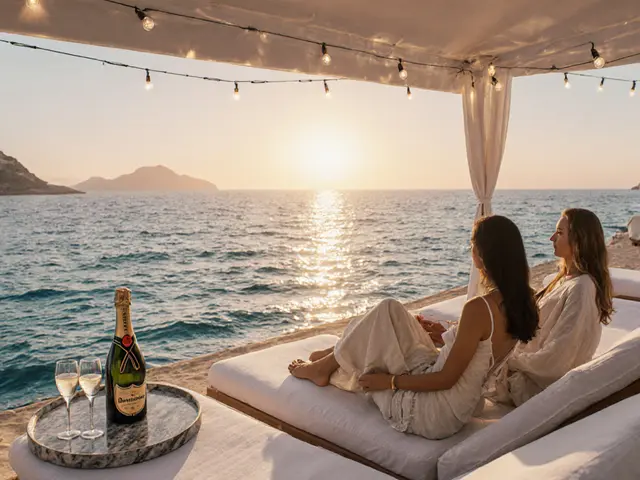When you walk through the gilded doors of Hotel de Paris Monte Carlo, you don’t just check in-you step into a story written in velvet, crystal, and gold leaf. This isn’t just a hotel. It’s a living archive of Monaco’s most glamorous moments, where royalty, movie stars, and billionaires have lingered over champagne since 1864. The scent of fresh orchids, the murmur of French in the lobby, the quiet clink of fine china in Le Louis XV-these aren’t stage props. They’re the everyday rhythm of a place that never stopped being extraordinary.
The Birth of a Legend
| Year | Event |
|---|---|
| 1864 | Opened as a modest guesthouse by the Société des Bains de Mer |
| 1890 | Expanded into a grand palace to match the rising fame of Monte Carlo |
| 1950s | Hosted Grace Kelly and Prince Rainier during their courtship |
| 1987 | Underwent full restoration after decades of wear |
| 2018 | Added 15 new suites, including the 1,200 sq. ft. Royal Suite |
The hotel didn’t just survive the 20th century-it defined it. When the Monte Carlo Casino opened next door in 1863, the town needed a place for its guests to stay. What began as a simple lodging became the epicenter of European high society. By the 1920s, guests arrived by private train, often with their own staff. The hotel’s staff trained for years just to learn how to serve caviar without smudging the pearls on a guest’s gown.
Where the Elite Unwind
There are 170 rooms and suites at Hotel de Paris Monte Carlo. Each one is unique. No two are alike. The decor leans toward Belle Époque elegance: gilded mirrors, hand-painted ceilings, silk damask walls. But it’s the details that matter. The beds use 800-thread-count Egyptian cotton. The bathrooms have heated marble floors and L’Occitane amenities sourced from Provence. One suite has a private elevator that opens directly into the casino floor-reserved for guests who prefer discretion over grand entrances.
Room 412, known as the ‘Grace Kelly Suite,’ still holds her original dressing table. A small plaque notes she once ordered 12 dozen white roses delivered daily for a week. The staff still remembers. They don’t ask. They just deliver.
The Restaurant That Changed Fine Dining
Le Louis XV - Alain Ducasse is more than a restaurant. It’s a three-Michelin-star temple where every plate tells a story. The menu changes daily, based on what’s freshest from the Mediterranean coast. Lobster from the Bay of Saint-Tropez, truffles from Perigord, sea urchins harvested at dawn off the coast of Corsica. Each dish is plated with precision, but never feels cold. Ducasse believes food should feel like a secret shared between chef and guest.
The wine cellar holds over 500,000 bottles. Some date back to 1847. A single bottle of 1945 Château Mouton Rothschild costs €12,000. Guests who order it often do so to celebrate a birth, a deal, or a quiet moment of triumph. The sommelier doesn’t rush you. He’ll let you sit with the wine for 20 minutes before pouring, letting the aroma bloom.

The Nightlife That Never Sleeps
At midnight, the hotel’s hidden bar, L’Atelier du Barman, opens. No sign. No doorbell. You need a code-given only to guests who’ve dined at Le Louis XV or booked a suite. Inside, bartenders mix cocktails using ingredients like violet liqueur from Lyon and smoked sea salt from the Atlantic. The playlist? 1960s French jazz, vinyl only. No phones allowed. No photos. Just conversation, candlelight, and the hum of a vintage turntable.
Outside, the Casino de Monte-Carlo glows like a jewel box. The roulette wheels spin, the slot machines chime, and the crowd shifts like tides. But the real magic happens after 2 a.m., when the casino empties and the hotel’s private limousines begin picking up guests who’ve stayed too long. They don’t take them home. They take them to the rooftop terrace, where a chef waits with warm lobster rolls and Dom Pérignon. No one asks why. Everyone knows.
The Secrets Behind the Scenes
Staff at Hotel de Paris Monte Carlo don’t just work here-they live here. Over 60% have been employed for more than 15 years. One butler has served five generations of the same family. He remembers when the grandfather ordered the same brand of tea every morning. Now, the grandson does too. The hotel keeps handwritten notes on every returning guest: favorite pillow, preferred window view, whether they like their coffee with one sugar or none.
There’s a room on the 6th floor that hasn’t been occupied since 1982. It was reserved for the Queen of England, who canceled her stay at the last minute. The staff still make the bed daily. They change the towels. They open the curtains at 7 a.m. and close them at 10 p.m. No one knows why. No one asks. It’s just how things are done.

Why It Still Matters Today
In a world of algorithm-driven luxury-where hotels compete on Instagram aesthetics and AI concierges-Hotel de Paris Monte Carlo refuses to change. It doesn’t need to. Its power comes from what it doesn’t do: no digital check-in, no mobile key cards, no voice-activated lights. Instead, there’s a butler who remembers your name. A porter who knows you hate the elevator on the left. A waitress who brings your favorite book when she sees you reading alone at dinner.
This hotel doesn’t sell rooms. It sells belonging. For one night, you’re not a tourist. You’re part of a tradition older than most nations. The lights stay on. The champagne stays chilled. The silence between the notes of the piano in the lounge? That’s not empty space. That’s history breathing.
The Real Cost of Opulence
A standard room starts at €1,100 per night. The Royal Suite runs €18,000. That’s not just for the marble and the views. It’s for the 24-hour access to the private art curator who’ll show you the original Renoir sketches in the hotel’s collection. It’s for the chef who’ll fly in black truffles from Perigord on short notice. It’s for the fact that, if you mention offhand that you miss your grandmother’s apple pie, they’ll bake one for you the next morning-with a note in French: "Pour vous, comme elle l’aimait."
This isn’t luxury as a trend. It’s luxury as a promise. And in Monte Carlo, where the world comes to be seen, Hotel de Paris is where the world comes to be understood.
Is Hotel de Paris Monte Carlo worth the price?
Yes-if you value experience over expense. The cost includes private butler service, daily champagne, curated cultural experiences, and access to exclusive events like private casino tours or backstage passes to the Monte Carlo Opera. You’re not paying for a room. You’re paying for a level of personal attention that no algorithm can replicate.
Can you visit the hotel without staying overnight?
Absolutely. The lobby, Le Louis XV restaurant, and the Champagne Bar are open to the public. Many locals come for afternoon tea or to enjoy the live piano music in the lounge. Reservations are required for dining, but walking in for a coffee or a glass of champagne is welcome.
What’s the best time of year to stay?
Late spring (May-June) and early fall (September-October) offer the best balance: warm weather, fewer crowds, and the full operation of all hotel services. Summer is busy with the Grand Prix, and winter is quieter-but the hotel’s heated rooftop terrace and indoor pool make it cozy even in December.
Does the hotel offer spa services?
Yes. The Spa by La Prairie offers treatments using Swiss biotech skincare. The signature 90-minute ritual includes a thermal circuit, a personalized massage using gold-infused oil, and a champagne-and-caviar recovery. Bookings are limited to six guests per day.
Is the hotel family-friendly?
It’s not designed for kids, but they’re welcome. The hotel offers a curated children’s program with art classes, pastry-making workshops, and guided tours of Monaco’s marine museum. Babysitting is available through a vetted agency. Most families stay in the two-bedroom suites with private terraces.




